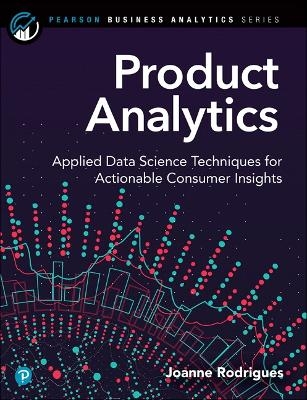
Product Analytics
Addison Wesley (Verlag)
978-0-13-525852-1 (ISBN)
Drawing on extensive enterprise experience and deep knowledge of demographics and sociology, Rodrigues-Craig shows how to create better theories and metrics, so you can accelerate the process of gaining insight, altering behavior, and earning business value. You’ll learn how to:
Develop complex, testable theories for understanding individual and social behavior in web products
Think like a social scientist and contextualize individual behavior in today’s social environments
Build more effective metrics and KPIs for any web product or system
Conduct more informative and actionable A/B tests
Explore causal effects, reflecting a deeper understanding of the differences between correlation and causation
Alter user behavior in a complex web product
Understand how relevant human behaviors develop, and the prerequisites for changing them
Choose the right statistical techniques for common tasks such as multistate and uplift modeling
Use advanced statistical techniques to model multidimensional systems
Do all of this in R (with sample code available in a separate code manual)
Joanne Rodrigues is an experienced data scientist with master’s degrees in mathematics, political science, and demography. She has six years of experience in statistical computing and R programming, as well as experience with Python for data science applications. Her management experience at enterprise companies leverages her ability to understand human behavior by using economic and sociological theory in the context of complex mathematical models.
Part I: Qualitative Methodology
Chapter 1: Data in Action: A Model of a Dinner Party
Chapter 2: Building a Theory of the Universe–The Social Universe
Chapter 3: The Coveted Goal Post: How to Change User Behavior
Part II: Basic Statistical Methods
Chapter 4: Distributions in User Analytics
Chapter 5: Retained? Metric Creation and Interpretation
Chapter 6: Why Are My Users Leaving? The Ins and Outs of A/B Testing
Part III: Predictive Methods
Chapter 7: Modeling the User Space: k-Means and PCA
Chapter 8: Predicting User Behavior: Regression, Decision Trees, and Support Vector Machines
Chapter 9: Forecasting Population Changes in Product: Demographic Projections
Part IV: Causal Inference Methods
Chapter 10: In Pursuit of the Experiment: Natural Experiments and the Difference-in-Difference Design
Chapter 11: In Pursuit of the Experiment Continued: Regression Discontinuity, Time Series Modelling, and Interrupted Time Series Approaches
Chapter 12: Developing Heuristics in Practice: Statistical Matching and Hill’s Causality Conditions
Chapter 13: Uplift Modeling
Part V: Basic, Predictive, and Causal Inference Methods in R
Chapter 14: Metrics in R
Chapter 15: A/B Testing, Predictive Modeling, and Population Projection in R
Chapter 16: Regression Discontinuity, Matching, and Uplift in R
Conclusion
| Erscheinungsdatum | 02.03.2019 |
|---|---|
| Reihe/Serie | Pearson Business Analytics Series |
| Verlagsort | Boston |
| Sprache | englisch |
| Maße | 175 x 229 mm |
| Gewicht | 680 g |
| Themenwelt | Informatik ► Datenbanken ► Data Warehouse / Data Mining |
| Informatik ► Office Programme ► Outlook | |
| Wirtschaft ► Betriebswirtschaft / Management ► Marketing / Vertrieb | |
| ISBN-10 | 0-13-525852-9 / 0135258529 |
| ISBN-13 | 978-0-13-525852-1 / 9780135258521 |
| Zustand | Neuware |
| Informationen gemäß Produktsicherheitsverordnung (GPSR) | |
| Haben Sie eine Frage zum Produkt? |
aus dem Bereich


